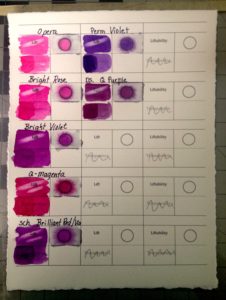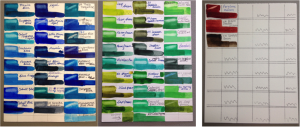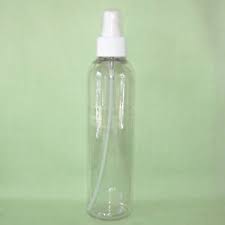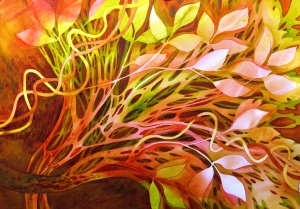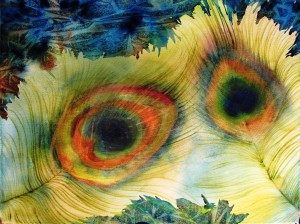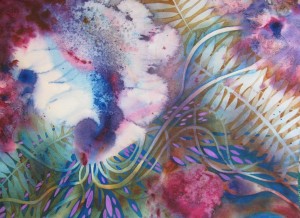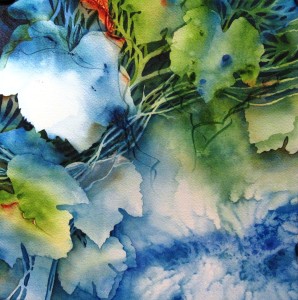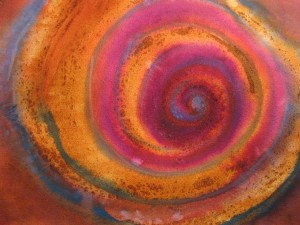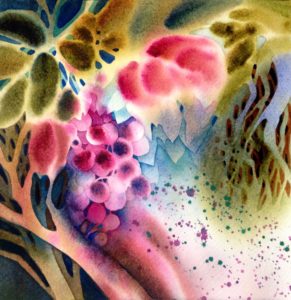
Here is the key – Paint and Water, back to simple.
Sounds easy right? Watercolor painting is well known as the hardest medium to master. They say the more you know, the harder it gets. There are so many paints and each one has their own characteristics/personality. Even the same color name from another brand name can be totally different.
Examples of Characteristics/Personality: Staining, granulating, settling, liftability, lightfastness, transparency, opaque, semi opaque, waxy, powdery, shiny, stays a light value, goes to a dark value, moves and spreads, stays exactly where you put it, etc. etc.
What’s an artist to do to be successful?
K.I.S.S. – Keep it Simple, Stupid! LOL 🙂
- Limit your palette. It is exciting to try out all those beautiful colors you find, but with 1000’s of paints out there, it can be mind boggling and expensive. Try to stay between 12 and 40 colors. I know it’s hard, but even the masters have their favorite colors and they stay true to their palette.
- Get to know your paints. By all means, play with your paints, watch how the paint reacts on your paper and in your palette. You can tell a lot about a paints personality while it’s still in your palette when you add water and mix it around in your mixing tray. Does it stain? Does it granulate? Does it separate? Best Tool Ever, Paint Logbook. See previous blog for my new updated version.
- The main key to successful watercolor painting is…… Drum roll please! Paint to water ratio. Yes, that’s the key, simple right? Not so much. There are many factors affecting the paint to water ratio. Humidity, temperature, time/evaporation, and you of course. Here are some tips to help you with your paint to water ratio.
- Test your color on a paper towel, or a scrap of watercolor paper before applying it to your painting.
- After getting your paint to water ratio just right for all those beautiful rich colors you’re using, be mindful of how much water remains in your brush after rinsing. Watercolor brushes are made to hold a lot of water. This extra water goes right into the new color you prepared. Every time this happens, the water from the brush dilutes the paint color to a wimpier version therefore requiring more paint to be added. To avoid this, simply rinse your brush and laying it on its side on a paper towel, dab it gently, turn it over, dab again, so the belly of the brush touches the paper towel two or three times.
- When you’re working in the wet into wet style, mix up your colors a little darker than what you would like on your painting. Since there is already water on your paper, it will change your paint to water ratio. Remember also, watercolors dry approximately 20% lighter.
- Mix up more paint than you need. Watercolor painting is a time sensitive activity, if you’re taking time out to mix up more color while your painting is sitting there drying, you’re likely to get some undesirable effects.
- Keep the area dry around your painting. As your paper dries it will pull in any water around its edges, causing a ruffling effect.
Happy Painting!

